
The TurboGrafx-16, known as the PC Engine outside North America, is a home video game console designed by Hudson Soft and sold by NEC Home Electronics. It was the first console marketed in the fourth generation, commonly known as the 16-bit era, though the console has an 8-bit central processing unit (CPU) coupled with a 16-bit graphics processor. It was released in Japan in 1987 and in North America in 1989. In Europe the Japanese model was unofficially imported and distributed in the United Kingdom and France from 1988. In Japan, the system was launched as a competitor to the Famicom, but the delayed United States release meant that it ended up competing with the Sega Genesis and later the Super NES.
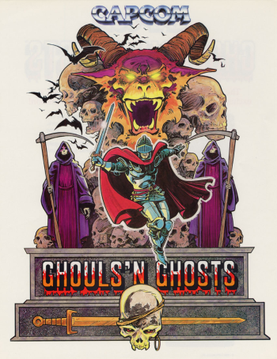
Ghouls 'n Ghosts, known as Dai Makaimura in Japan, is a side-scrolling platform game developed by Capcom, released as an arcade video game in 1988 and ported to home platforms. It is the sequel to Ghosts 'n Goblins and the second game in the Ghosts 'n Goblins series.

Street Fighter II: The World Warrior is a 2D fighting game developed by Capcom and originally released for arcades in 1991. It is the second installment in the Street Fighter series and the sequel to 1987's Street Fighter. It is Capcom's fourteenth game to use the CP System arcade system board. Street Fighter II vastly improved many of the concepts introduced in the first game, including the use of special command-based moves, a combo system, a six-button configuration, and a wider selection of playable characters, each with a unique fighting style.

Altered Beast is a 1988 beat 'em up arcade video game developed and published by Sega. The game is set in Ancient Greece and follows a player character chosen by Zeus to rescue his daughter Athena from the demonic ruler of the underworld, Neff. Through the use of power-ups, the player character can assume the form of different magical beasts. It was ported to several home video game consoles and home computers. It was the pack-in game for the Mega Drive when that system launched in 1988.

Super Street Fighter II: The New Challengers is a competitive fighting game produced by Capcom and originally released as an arcade game in 1993. It is the fourth game in the Street Fighter II sub-series of Street Fighter games, following Street Fighter II: Hyper Fighting. It refines and balances the existing character roster from the previous versions, and introduces four new characters. It is the first game on Capcom's CP System II hardware, with more sophisticated graphics and audio over the original CP System hardware used in previous versions of Street Fighter II.
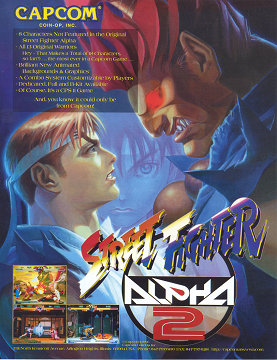
Street Fighter Alpha 2, known as Street Fighter Zero 2 in Japan, Asia, South America, and Oceania, is a 1996 fighting game originally released for the CPS II arcade hardware by Capcom. The game is a remake to the previous year's Street Fighter Alpha: Warriors' Dreams. The game features a number of improvements over the original, such as new attacks, stages, endings, and gameplay features. It was followed by Street Fighter Alpha 3.
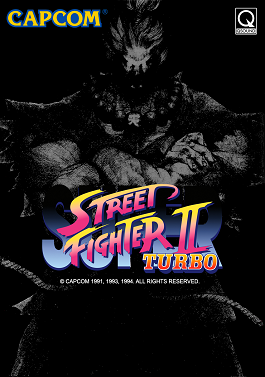
Super Street Fighter II Turbo is a fighting game released for the arcades by Capcom in Japan on February 23, 1994, in North America on February 23 and March 26, 1994 (beta) and in Europe in March 1994 (beta). It is the fifth installment in the Street Fighter II sub-series of Street Fighter games, following Super Street Fighter II: The New Challengers. Like its predecessor, it ran on the CP System II hardware.
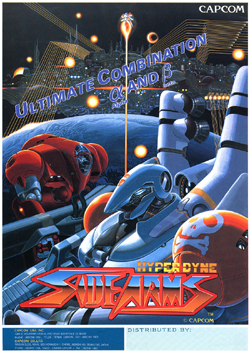
Hyper Dyne Side Arms (サイドアーム) is a horizontally scrolling shooter developed and released by Capcom as an arcade video game in 1986. The player takes control of a flying mecha fighter who must battle an alien army. Side Arms uses a two-directional attacking system similar to Capcom's previous shoot-'em-up Section Z.
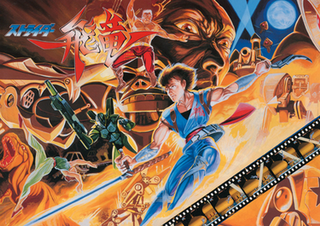
Strider, released in Japan as Strider Hiryū, is a hack-and-slash platform game released in arcades in 1989 by Capcom. Set in a dystopian future where Earth is ruled by the tyrannical Grandmaster Meio, it follows the titular Strider named Hiryu as he attempts to end his tyrannical reign for good. The game resulted from cooperation between Capcom and manga publisher Moto Kikaku. It marked the video game debut of Strider Hiryu, after the character was introduced in the 1988 manga Strider Hiryu.
1989 saw many sequels and prequels in video games, such as Phantasy Star II, Super Mario Land, Super Monaco GP, along with new titles such as Big Run, Bonk's Adventure, Final Fight, Golden Axe, Strider, Hard Drivin' and Teenage Mutant Ninja Turtles. The year also saw the release of the Sega Genesis and TurboGrafx-16 in North America, and the Game Boy worldwide along with Tetris and Super Mario Land.
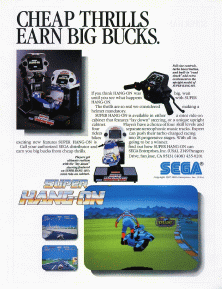
Super Hang-On is a motorcycle racing arcade video game released by Sega as the sequel to Hang-On. It uses a simulated motorcycle arcade cabinet, like the original game. An updated version was released in arcades 1991 as Limited Edition Hang-On.
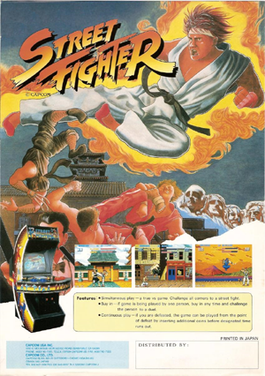
Street Fighter is a 1987 arcade video game by Japanese developer and publisher Capcom. It is the first competitive fighting game produced by the company and the first installment in the Street Fighter series. It was a commercial success in arcades and introduced special attacks and some of the conventions made standard in later fighting games, such as the six-button controls and the use of command-based special moves.
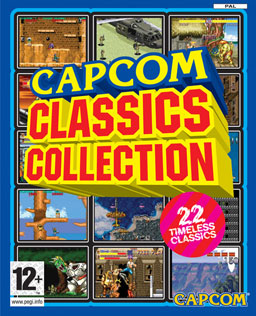
Capcom Classics Collection is a compilation of arcade games released by Capcom for the PlayStation 2 and Xbox on September 27, 2005 in North America and in 2006 in Japan. It was developed by Digital Eclipse Software, Sensory Sweep, and its Japanese developer Klein Computer Entertainment. A second volume, Capcom Classics Collection Vol. 2, was released on November 24, 2006 in North America, for PlayStation 2 and Xbox. The second volume as well as the Xbox version of the first volume were not released in Japan.

Willow is a 1989 arcade game by Capcom. Capcom published two different games in 1989 based on the 1988 film of the same name. The arcade version is a platform game while the Nintendo Entertainment System version is an action role-playing game.

Mercs, originally released as Senjō no Ōkami II in Japan, is a run and gun video game developed and published in arcades by Capcom in 1990. It is a sequel to the 1985 arcade video game Commando. While not as successful as its predecessor, Mercs was well received by critics and was a moderate commercial success. It was followed by Wolf of the Battlefield: Commando 3 in 2008, a downloadable game.

Midnight Resistance is a side-scrolling run and gun game produced by Data East and released in arcades in 1989. Midnight Resistance is set in a dystopian future where the player controls a member of a resistance movement who goes on a mission to rescue his kidnapped family from a drug kingpin.
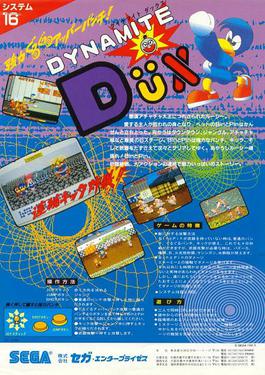
Dynamite Düx is a beat 'em up developed by Sega AM2 and released by Sega as an arcade video game in 1988. Produced by Yu Suzuki and with music composed by Hiroshi Kawaguchi, the game uses the Sega System 16 arcade board, the same board used for Golden Axe and Altered Beast. It was ported to the Master System, Amiga, Amstrad CPC, Atari ST, Commodore 64, and ZX Spectrum platforms in the following year. A Mega Drive version was planned but never released.

Street Fighter Alpha: Warriors' Dreams, known as Street Fighter Zero in Japan, Asia, South America, and Oceania, is a 2D arcade fighting game by Capcom originally released in 1995 for the CP System II hardware. It was the first all new Street Fighter game produced by Capcom since the release of Street Fighter II in 1991. The working title for the game was Street Fighter Legends.
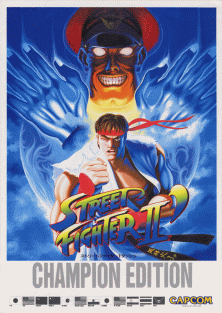
Street Fighter II: Champion Edition, released as Street Fighter II Dash in Japan, is a fighting game released by Capcom in 1992. It was launched for arcades and converted to several video game consoles. It is the first of several updated versions of Street Fighter II, and part of the Street Fighter series. The main changes are the addition of the four grand masters as playable characters and mirror matches. The fighting techniques of the eight main characters from the original game were further balanced for competitive play.


















